This Month in the Markets - July 2024
with Bryan Goligoski - Axxcess Editor at Large
I waited on this one a little longer than most, but it paid off given the rather unprecedented events in the world, here at home, in the economy, and the markets. This month’s view from above, and below, is well worth the effort. Double up on the caffeine or double down on the properly crafted summer beverage of choice. Make it to the end, and you win a prize. Like a really good one.

We’ve got that one covered as everyone alive right now seems to have been handed a fortune cookie devoid of Hallmark card sayings about love, luck, and eating more Chinese food. There is just swirling chaos at this point. And the reality is, the outcomes are guaranteed to impact markets in some way shape or form.

Onward to the reason all markets are on edge. Equities, bonds, commodities, derivatives, real estate…all of it. It has been a complete rocket ship of a rise since the pandemic arrived in the first quarter of 2020. The kind of which repricing has pretty much never been experienced. Let’s take a quick visual tour so we can remember what our trip around the world looked like since this, and where it is today.

Before we further down the path, I want to make clear one thing. When I call something a ‘policy error’ or reference having ‘bubble aspects’, that is by no means meant to be a degradation of any profits, or losses, you might have experienced during this astounding period. If you are up in your portfolio, or your house doubled in price, good on ya! Likewise, if you can’t afford Mastro’s anymore, that’s something to take into consideration as well. I can’t even pay for parking at this point, let alone the famous seafood tower.

First up, interest rates. Pre-COVID we were on a small but manageable rate hike program, the first of its kind since the Global Financial Crisis. Moderate and deliberate. A Fed funds rate of .25% in 2015, a stepping on the gas in 2016, and then a legit takeoff to 2.5% in 2019. Nobody gets hurt in that environment.
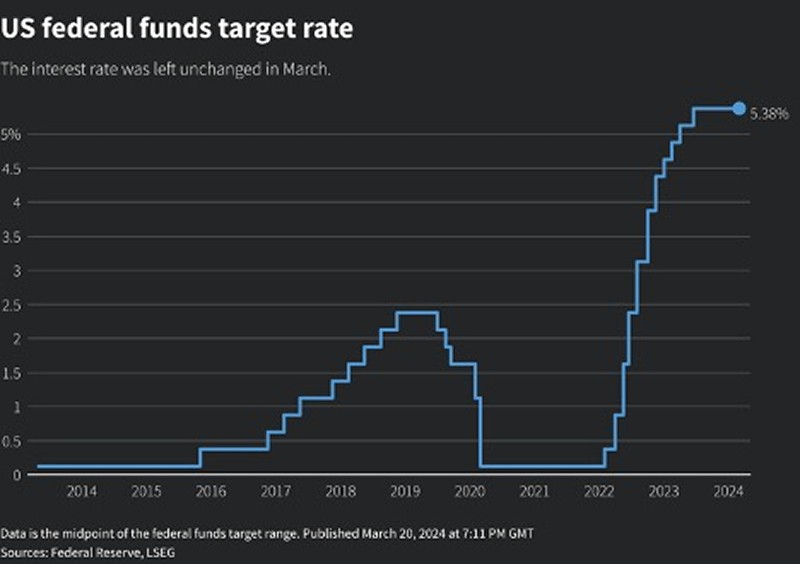
Rates then go back to .25% almost overnight in response to an unprecedented global panic and stay there for two years. This twenty four month period, in my eyes, will go down as the biggest 'policy error' any Fed or central bank I’ve ever known has made. What happens then next is jaw dropping. Assuming a 10-fold increase in the Fed funds rate is jaw dropping. It was way too much liquidity for not as serious a shock. And way too much tightening to bring it back in. Not everyone got COVID, but everyone got inflation. A lot of it.
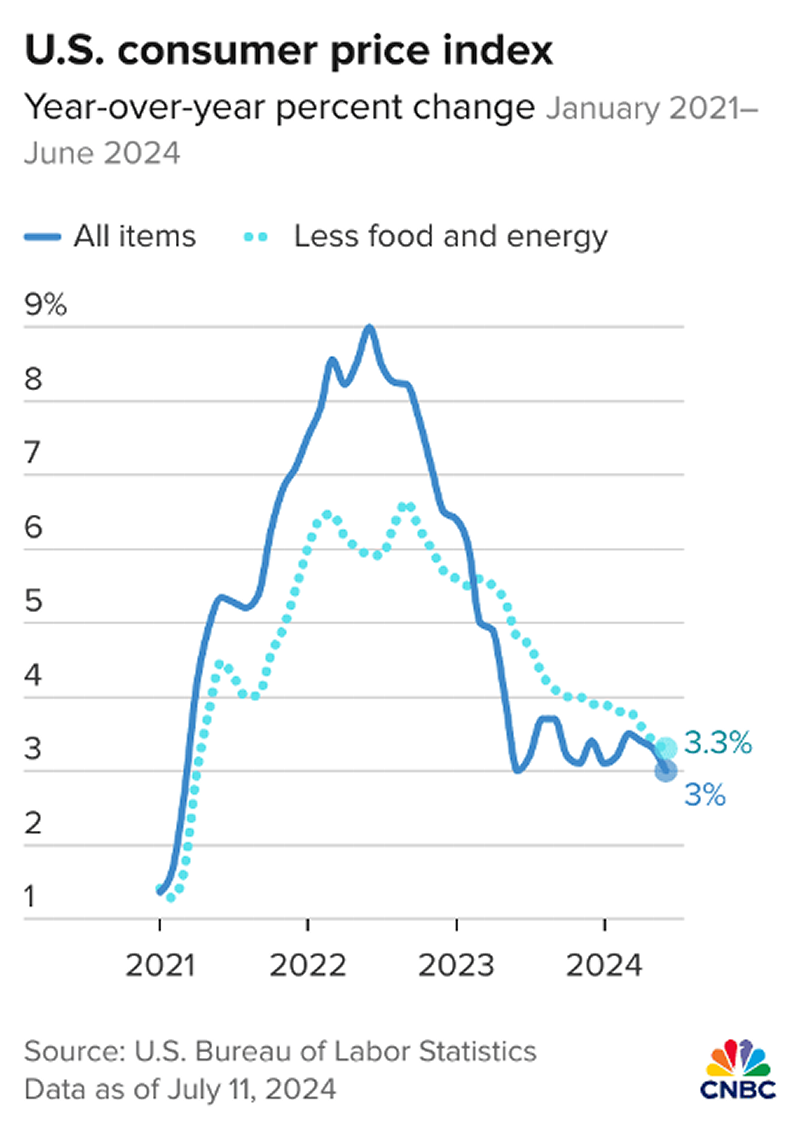
Now, hear me out. While the markets are cheering a recent cooling of this ‘bout’ of inflation, there is still an high priced pig working its way through the python. And it’s compounded itself by compounding itself.

Work with me here. If inflation is going up a somewhat standard 2% annually like it has been for a while, in ten years $100 of goods and services becomes $120. On the far more frightening hand, if you have $100 of goods and services at cost that compound at an average rate of 6% for only three years, you get to just under a $20 increase. So, in the heat of the COVID money giveaway, you took down 10 years of ‘normal’ inflation in 3 years. To which I say, ‘holy hell, money supply actually does matter'.

Want something else that will have you marinating ice cubes earlier than usual? If for the next seven years after this spike, inflation gets back to a more normal 3%, the cost of your basket of goods and services winds up being $148. That’s 22% higher than it would have been otherwise in a normal, non-spiked situation. Call me old fashioned, but that’s not a small number when it comes to what you are spending on ‘stuff’. Food, transport, and where you dwell make up 75% of that ‘stuff’.

Source: Bureau of Labor Statistics
That’s coming hot out of the gate as they say. Stock or equites, whatever you want to call them, came out hot as well. With the S&P 500 running really hot. Tip to tail from the bottom in the SPY in March 2020 at $221, to a very recent peak of $563, the broad index has gone up 156%. And I hope you all participated in as much of that as you could have.
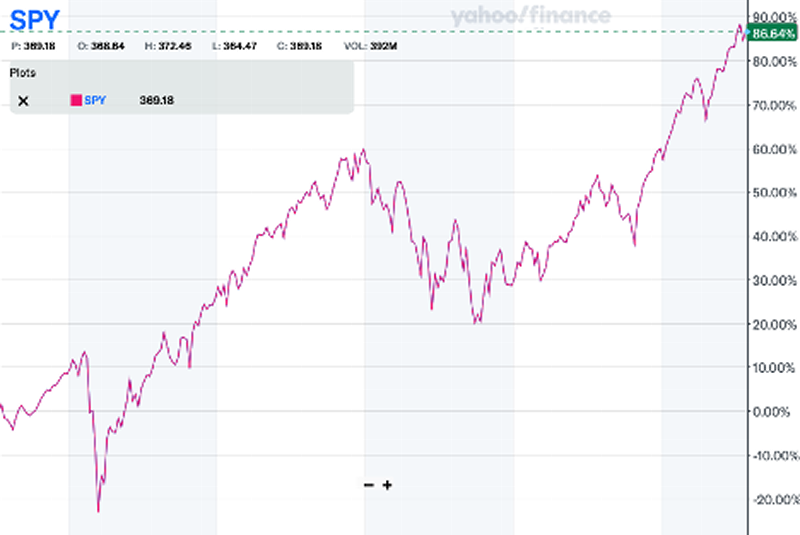
Source: Yahoo Finance
You know what I’m going to say next, I suspect. The S&P 500 is by no means ever to be called ‘the broad market average ‘again. It’s seven stocks that do all the work and get all the hot chicks, theoretically. The 493 that make up the rest of the market are up a mere 7% this year. I hope you owned even more of the former than the latter.
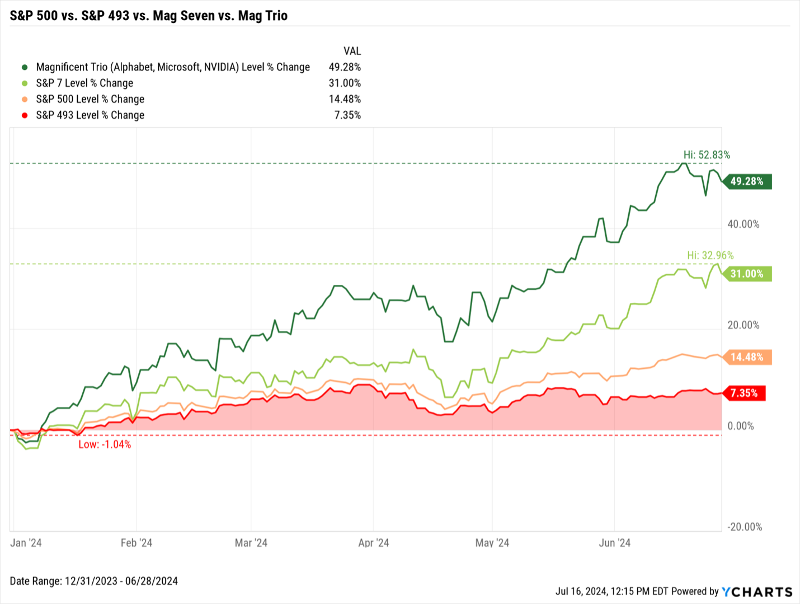
And why are these such the cool kids? Because they are rich and getting richer. Earning more money than anyone else out there, by a landslide. This is a huge number year over year. Simply enormous.
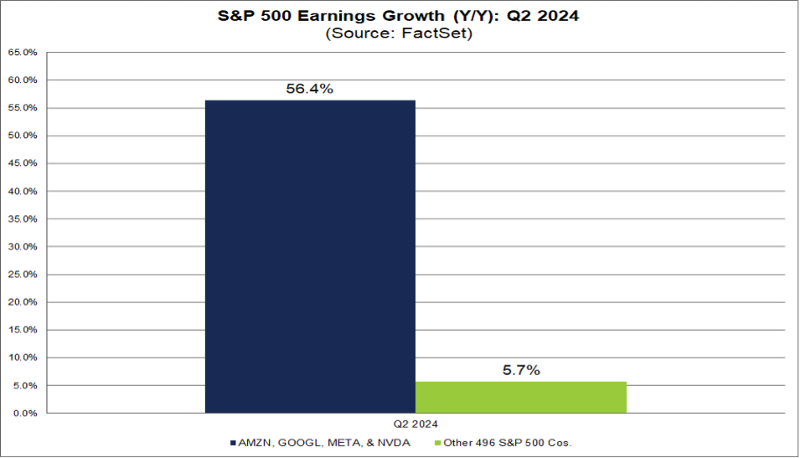
That trend is going to change though as the year goes on and the Big 7, 5, 3 or whatever they are called, start hitting tough earnings comps and a more normalized picture begins to emerge.
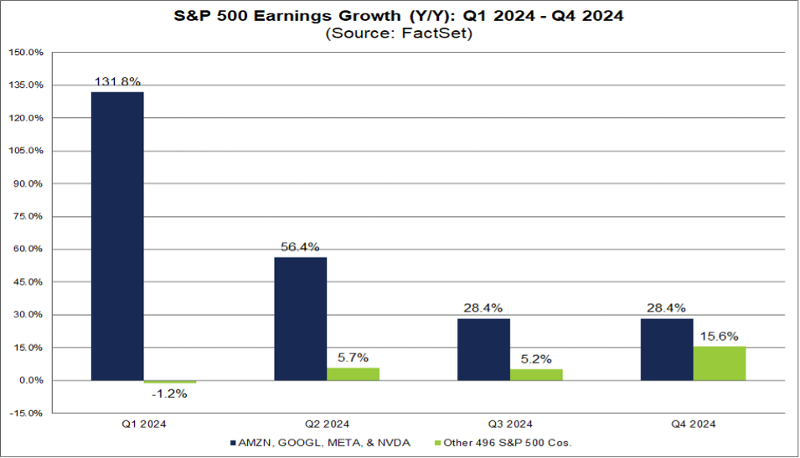
What does this all say about valuation and are we in another tech bubble? On the first question, markets could be seen as getting ‘a little bit rich’ as they say. Sorry Michael, I still like this chart even though you think it’s deceiving.
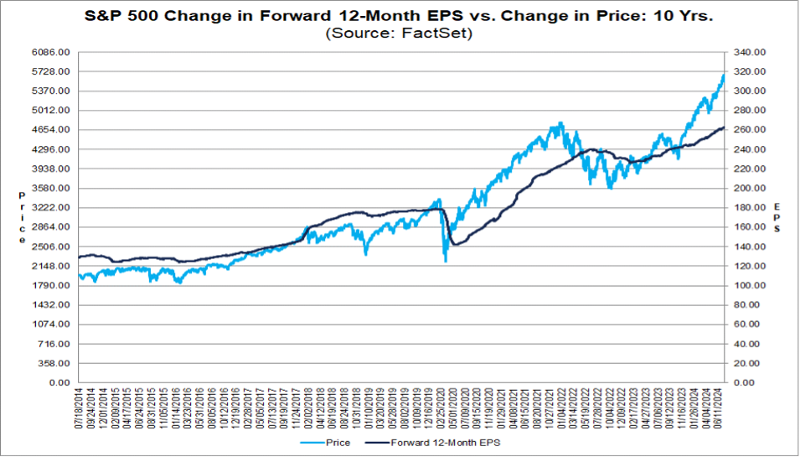
Another chart that augers well for bulls is that while the top-heavy names might be considered ‘rich’, for the rest of the group it’s not that glaring a problem. Is 18x earnings really that outside of normal’ish? Maybe on the high end, but by no means looking like the rubber band is stretched too thin.

Last thing I will say about asset prices and what’s happened over the last four years is the current FUBAR situation in residential real estate, and commercial as well. Everyone knows, those who had a home and refinanced when rates went to zero have no interest in selling….ever. If they are not a cash buyer, and need a mortgage, it’s a multiple higher than it was at the bottom. At the bottom you could get 2.5% on a 15% year. Today, that same money costs you 6.5%. A full 160% increase.
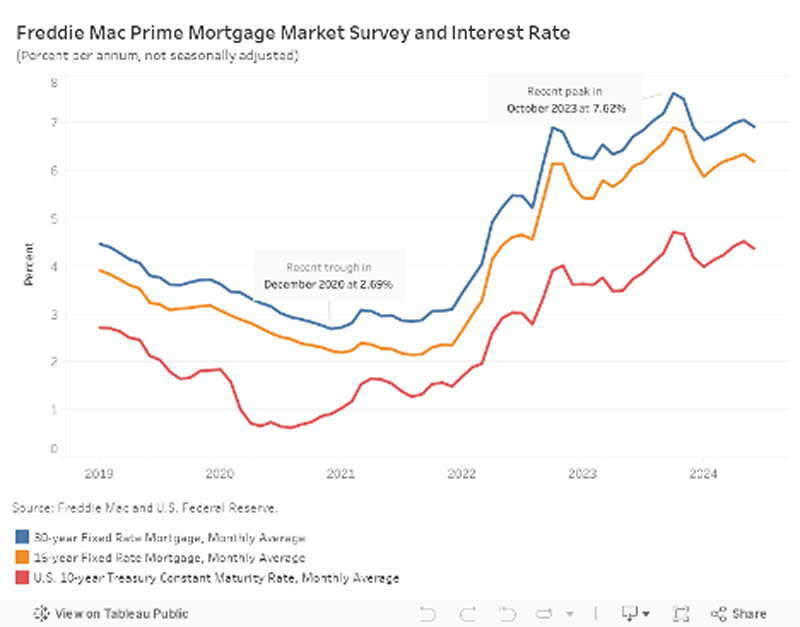
Source: National Association of Homebuilders
And anyone who doesn’t call ‘under a rock’ home knows that has happened to resi prices. Same thing I talked about before with inflation. When you go from a somewhat normal 5% annual appreciation over ten years, a $2,000,000 home becomes a $3,250,000.
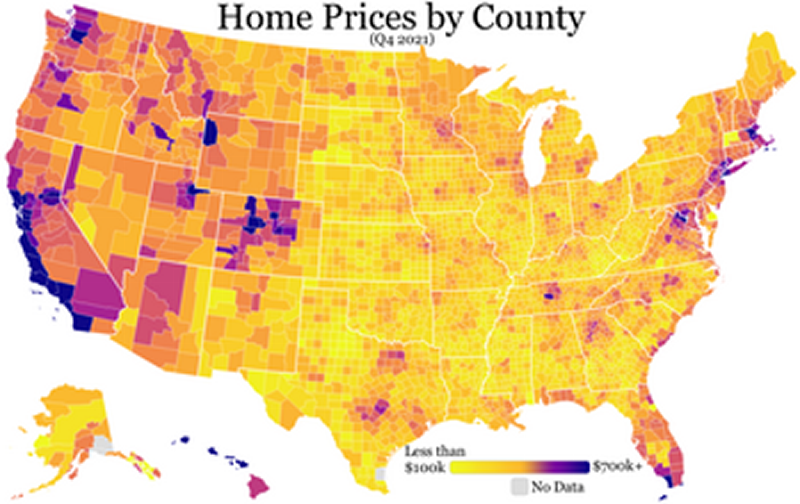
Source: Wikipedia
Jack that up to three years at 15% and you get slightly under $3,050,000…in just three years. Take it a step further and assume the next 7 years compound at 5% and your value after those 10 years is $4,300,000. Or a little over 30% more than in that ‘normal environment’ scenario.

Source: Redfin
In terms of commercial, we all pretty much know that city centers have been decimated by ‘work from home’ and ‘why would I ever go there again’ policies. I keep thinking I want to write a big piece on the current state of commercial real estate markets. All I can come up with is a reference to my guys in Guns ‘n Roses…’Welcome to the Jungle’. I’ll get to it someday, just not today.

If you have your fill of markets and want to avoid anything political stop here. While I am as disconnected from the drama and chicanery of today’s races for office. I do find the economic implications interesting and important.
Bloomberg helped me narrow the gap in my mind between Trump’s many character flaws, and why business likes him. And why he gets 50% of this country’s vote. Kamala just got coronated the new Democratic King, or Queen, on Sunday, so there isn’t much to say there yet, except maybe a ‘You go girl!’.

The financial journalists at Bloomberg did a big piece on Trump-a-Nomics earlier this month. Here are some excerpts, with commentary where it is important. Full disclosure, while he is most certainly not a ‘truth machine’, I do agree with Mark Zuckerberg that what went down that resulted in this photo of The Donald was rather ‘badass’. If I get a piece of my ear taken off by a semi-automatic, I’m going full fetal and crying for God, Jesus, Buddha, Allah, and everyone else in between.

Speaking of ‘badass’, Jamie Dimon is for sure one. While he may love himself more than most apex feeding sharks of finance, he has the banking and deal making goods to back it up. Plus, he isn’t afraid to rock a ‘puffy jacket’ in Davos.

This content is from the fine people and exceptional writers at Bloomberg, a must read for anyone at all interested in finance and markets. They are constantly running deals, take one.
Jaime Dimon on Trump’s Successes
Other prominent CEOs who don’t identify as Trump partisans have also been praising his presidency. “Be honest,” Dimon Said at the World Economic Forum in Davos, Switzerland, in January. “He was kind of right about NATO, kind of right about immigration. He grew the economy quite well. Tax reform worked. He was right about some of China. … He wasn’t wrong about some of these critical issues, and that’s why they’re voting for him.”
Trump relishes the compliment. He’s changed his view of the man he attacked on Truth Social last year as “Highly overrated Globalist Jamie Dimon” and now says he could envision Dimon, who’s thought to be contemplating a political career, as his secretary of the Treasury. “He is somebody that I would consider,” Trump says. (A spokesperson for Dimon declined to comment.)

On Inflation
There’s worry about what another Trump presidency could portend. Wall Street firms from Goldman Sachs, Morgan Stanley and Barclays have begun warning clients to expect higher inflation as Trump’s odds of recapturing the White House and imposing protectionist trade policies have risen

Trade and Tariffs
To the consternation of many business and consumer groups, Biden maintained Trump’s tariffs on China, even increasing ones on steel, aluminum, semiconductors, electric vehicles, batteries, and other goods. “This is going to add price inflation across the board, all in the name of ‘tough guy’ election-year politics,” Yaël Ossowski, deputy director of the Consumer Choice Center, a nonpartisan advocacy group, said in May.
In Trumpworld, however, Biden’s actions are seen as validation that Trump was right—and his Democratic critics were wrong—about the threat China poses to the US economy and security. Trump is eager to prescribe more of the same medicine, including to European allies. In addition to targeting China for new tariffs of anywhere from 60% to 100%, he says he’d impose a 10% across-the-board tariff on imports from other countries, citing a familiar litany of complaints about foreign countries not buying enough US goods.
“The ‘European Union’ sounds so lovely,” Trump says. “We love Scotland and Germany. We love all these places. But once you get past that, they treat us violently.” He mentions reluctance in Europe to import US automobiles and agricultural products as key drivers of the more than $200 billion trade deficit, a statistic he considers a critical measure of economic fairness.
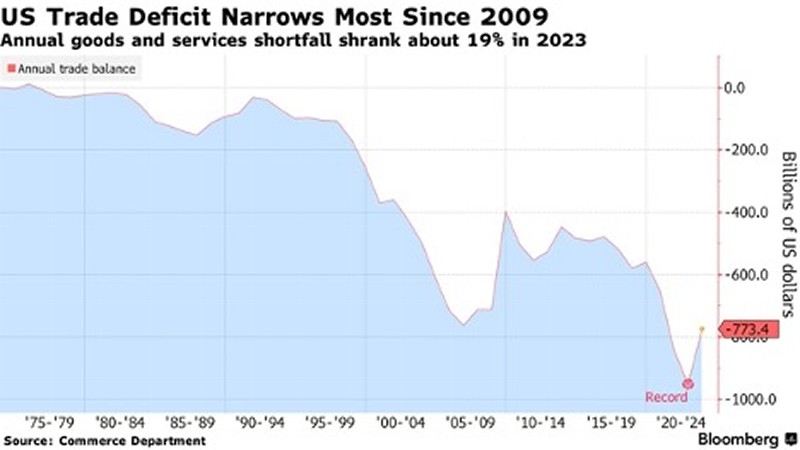
While there was a nice rebound in 2023, it’s still a fairly one-sided trade.
Apple, Tim Cook, and Trump
Some in Silicon Valley have learned that the best way to get Trump to alter his position on something is to appeal to him directly. That was certainly the case for Tim Cook. In 2019, Apple Inc. looked set to be a victim of Trump’s trade war with China, with billions of dollars at stake, as the president announced 25% import tariffs. He then publicly rejected Apple’s request for an exclusion. “Apple will not be given Tariff waiver, or relief, for Mac Pro parts that are made in China,” he wrote on Twitter. “Make them in the USA, no Tariffs!”
At Mar-a-Lago, Trump speaks fondly of Cook and reveals how Apple’s CEO persuaded him to relent. He recalls Cook reaching out privately and asking, “Could I come in and see you?” Trump appreciated the gesture of respect from the head of what at the time was the world’s most valuable company. “That’s impressive,” Trump says. “I said, ‘Yeah, come in.’” Trump remembers that Cook was straightforward. “He said to me, ‘I need help, you have tariffs of 25% and 50% [on Apple products imported from China],’” he recalls. “He said, ‘It would really hurt our business. It would destroy our business, potentially.’” (An Apple spokesperson declined to comment.)
Trump wasn’t looking to do that—mainly, he wanted to demonstrate that he could bring manufacturing jobs back to the US, as he’d promised to do. In his telling, he prevailed upon Cook to expand domestic production. “I said, ‘I’m gonna do something for you guys,’” Trump recalls, “‘but you have to build in this country.’” Four months later, Apple announced it was beginning construction on a campus in Austin. The press release quoted Cook saying: “Building the Mac Pro, Apple’s most powerful device ever, in Austin is both a point of pride and a testament to the enduring power of American ingenuity.” Cook then gifted Trump a $5,999 Mac Pro, one of the first made at the Texas factory.
Had Trump forced Cook’s hand? Doubtful. Apple had originally announced a year earlier that it would invest $1 billion in a new Austin campus, and Mac Pros had been assembled at existing Texas facilities since the Obama era. Nevertheless, the episode registered as a positive for Trump and established Cook at the opposite end of his personal CEO continuum from Zuckerberg. It also created a potential road map for how tech CEOs might navigate a second Trump term.“I found him to be a very good businessman,” he says of Cook.
All of which is a far cry from this…
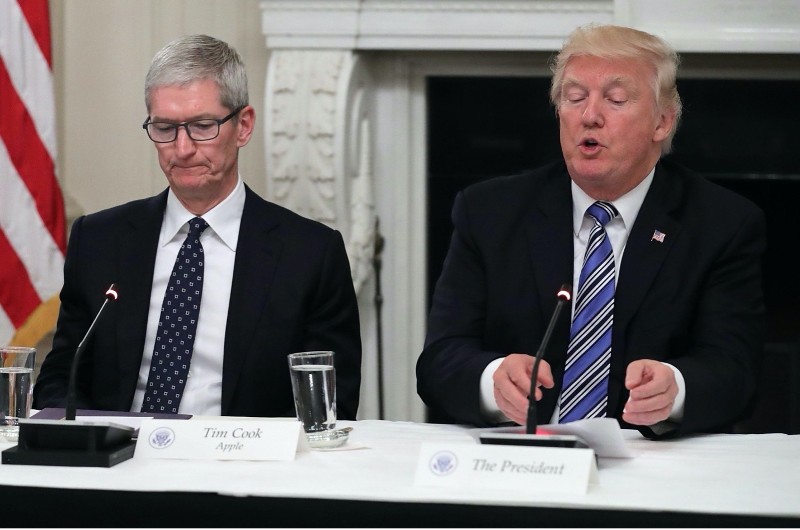
Finally, I join many Americans who are thanking President Joe Biden for his service. He was for sure a salve when the country needed one. At the end of the day, 82 is still 82. I hope he now gets to spend lots of time on the shuffleboard court and playing with the grandkids. No ‘dad bod’ here. Joe is looking tight.

And for those who made it this far, shoot me an e-mail saying you did, and I shall buy you an iced tea or adult beverage of your choice in the next year. This one appears tasty…I think!

Source: Herradura
The contents of this commentary: (i) do not constitute an offer of securities or a solicitation of an offer to buy securities, and (ii) may not be relied upon in making an investment decision related to any investment offering by Axxcess Wealth Management, LLC (“AWM”), an SEC Registered Investment Advisor. Advisory services are only offered to clients or prospective clients where AWM and its representatives are properly licensed or exempt from licensure.
Market data, articles and other content in this commentary are based on generally available information and are believed to be reliable. AWM does not warrant the accuracy or completeness of the information contained herein. Opinions are the author’s current opinions and are subject to change without notice. The views expressed in this commentary are subject to change based on market and other conditions. This commentary may contain certain statements that may be deemed forward looking statements. Please note that any such statements are not guarantees of any future performance and actual results or developments may differ materially from those projected. Any projections, market outlooks, or estimates are based upon certain assumptions and should not be construed as indicative of actual events that will occur. The information contained above is for illustrative purposes only.


